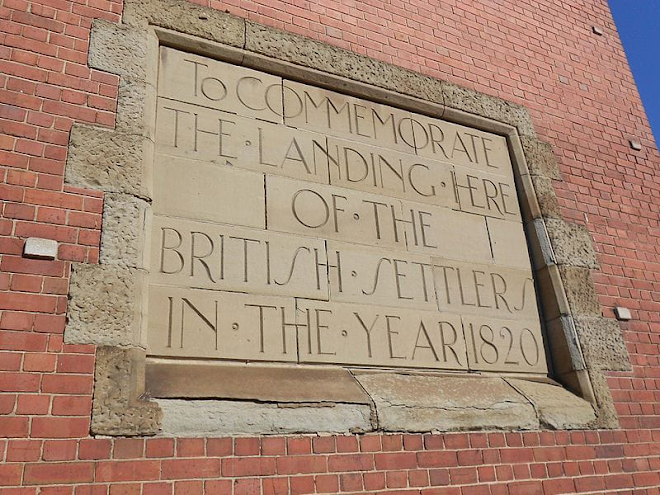From: "Becky Horne" < beckyjh@telkomsa.net>
Subject: Cemeteries in Port Elizabeth - Part I
Date: Tue, 17 Aug 2004 23:38:08 +0200
Subject: Cemeteries in Port Elizabeth - Part I
Date: Tue, 17 Aug 2004 23:38:08 +0200
Hi there Folks
Here is little bit of background info pertaining to the early cemeteries in Port Elizabeth. Maybe you will find a long lost relative?
SOURCE: Genealogical Society of SA - East Cape Branch Newsletter
November 1987 No. 4. Contribution from Liz ESHMADE
Many folk, including members of our society, find cemeteries morbid and chilly. Old cemeteries are interesting places. Walk round a cemetery, read the inscriptions, "listen" to the past! They recall a nation's history on every front. Come with me on a walk through the cemeteries of Port Elizabeth.
There is St. Mary's in which many of the 1820 Settlers and their first descendants lie. Some made their mark in this city and are recalled in names of modern businesses, streets and suburbs. Then there are sailors like John LONG, Master of the "Locust", who died in 1822, John CARGILL and George URQUHART of Aberdeen, Scotland, who drowned in May 1859 when their barque,
"The Shepherdess" was wrecked off Cape Receife. I wonder what disease "Mauritius Fever" was, which claimed the life of
M. WISSING, later Captain of the schooner "Barso", in 1879?
Further up the slope is three-year-old Agnes BLACKBURN, (d. 1876) whose epitaph reads:
"Lovely bud so young and fair,
Called hence by early doom,
Just came to show how sweet a flower
In Paradise would bloom" - beautiful words.
A Victorian Cross was awarded to Lt. Adj. J. CRAIG, of the 2nd Batt 10th Foot, for his gallantry during the Crimea. He was only 37 when he died in Aug 1861. Steam cranes were used on the North Jetty in 1886. One of these had a boiler explode which claimed 30 year old Edwin LEEKBLADE and 20 yr old John BROWN. They are buried a few plots apart. William HALIAND, aged 25
years died in July 1879 from injuries received in a fall from a horse, "almost immediately on his arrival in Port Elizabeth". He had doubtless come from Cornwall to start a new and interesting life. We cannot leave St. Mary's without noting two other epitaphs because they sum up the lives of those people so vividly and today such poetry is sadly missing in our modern cemeteries. One is Athrel LEO who died in May 1890, aged 34, "Not hers to linger here on earth consumed by slow decay, Death like a sudden whirlwind came, and swept her life away". The other is to John BROWN who died in May 1855 aged 37, "If life's a farce, mere childrens play, Let the rich trifle it away". I could not model mine on theirs for mine has been a life of cares".
Landslides have covered a section of St. May's and the years and vandals have wrecked havoc both here and in the cemetery in Russell Road. With the current awakening of consciousness of our heritage, they have been cleaned and repaired, where possible, and are maintained by the Municipality. In Russell Road, not many strong stones remain today. Those that were still intact were laid flat or set into the surrounding wall. The people here are mainly settlers. They are largely of the Catholic and Non-Conformist faith. There is James Langley DALTON, who, his stone tells us, was a defender of Rorkes Drift during the Zulu war of 1870-1884 and a recipient of the Victoria Cross. He died in 1887 at the age of 53. There is Georgina FISH, wife of the Wesleyan Minister of Pearson Street, Charles GEARD, who was a leader in getting a meeting together to form a Municipality to be responsible for the cleaning up the town and laying roads, etc. There are many Irish names like SCALLAN, MURPHY!
, O'CONNOR and O'REILLY. Thomas STERLEY, who landed here with 1820 Settlers, died in 1848 in his late 80's. Of STERLEYs in this cemetery, there are many. Thomas GRIFFIN was another 1820 Settler who arrived with the "Chapman", he died in 1843, aged only 49 and from the stones which have survived it would seem that his was one of the very first burials in this small cemetery.
To be continued.
Best wishes
Becky
